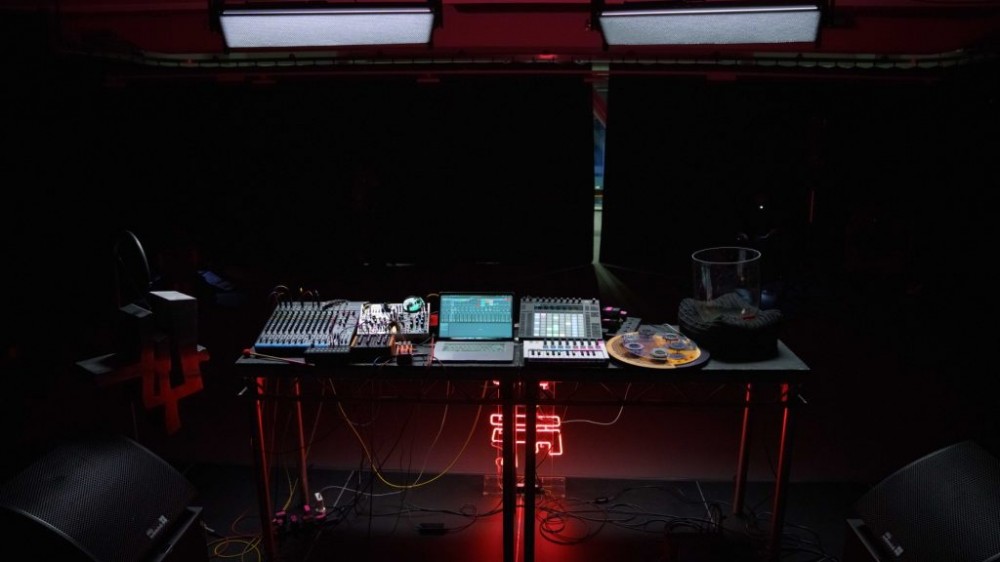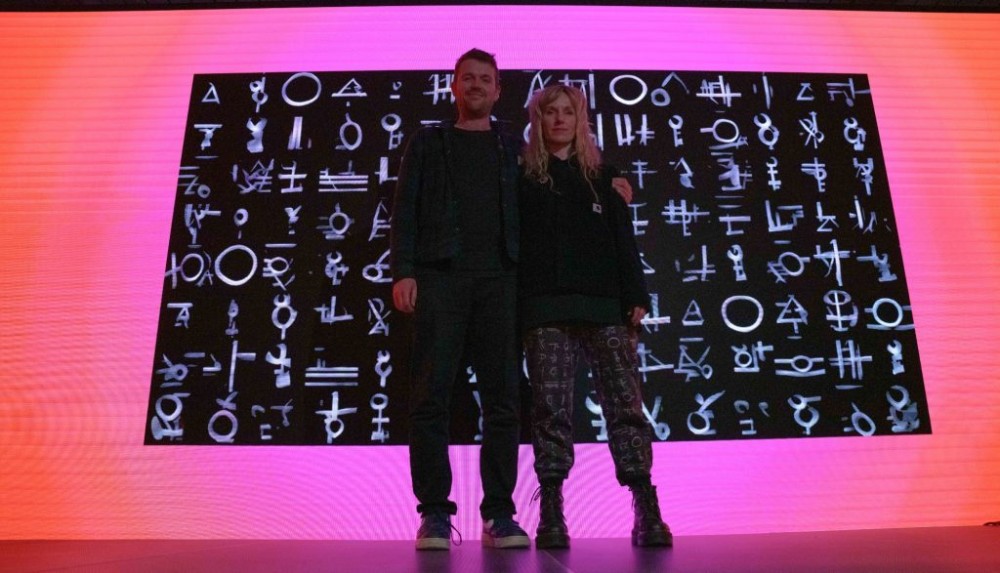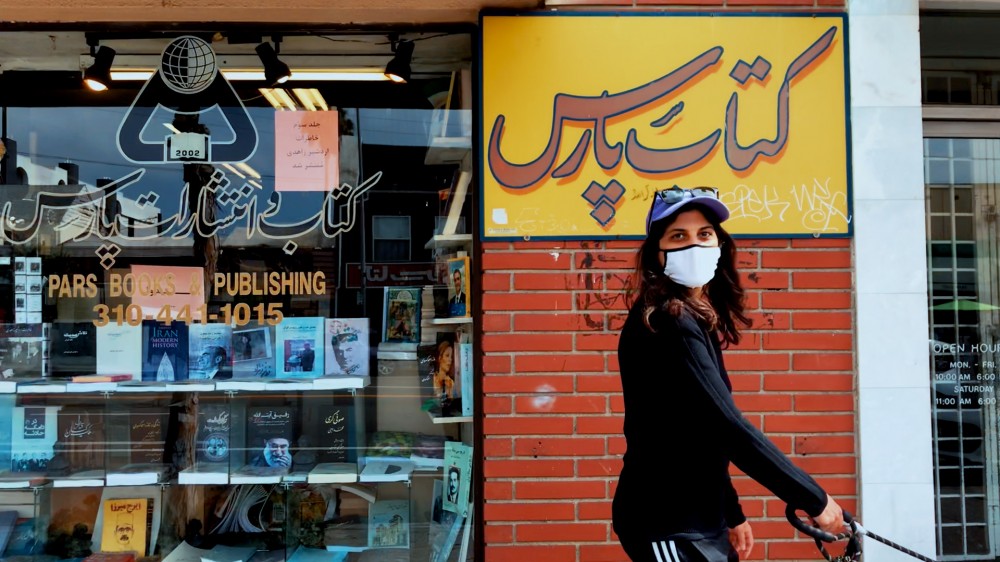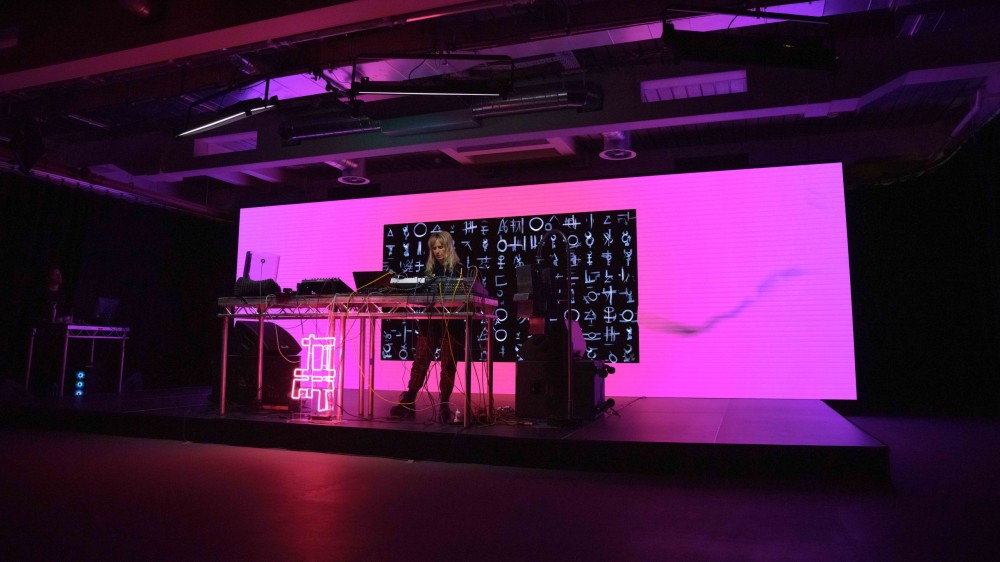
Patch Notes: Vicky Clarke
Musique concrète meets machine learning in this performance of AURA MACHINE from the Manchester sound artist, filmed at 180 Studios.
Vicky Clarke’s career in sound art began six years ago when the Manchester artist quit her job to begin an art foundation course. “I’d always been obsessed with sound, messing around with field recordings, playing instruments but hadn’t quite found my thing,” Clarke says. “Having time and space to work with materials, make sound sculptures and think about perception of sound in space was brilliant. Clarke then co-founded Noise Orchestra, a collaborative project based around DIY electronics that developed at residencies at events such as STEIM, CTM and Q02, doing workshops and then installations and sound walks.
“I feel like I’m now finding my voice in terms of solo performance and work,” Clarke says. “I tend to make a lot of experiments into particular approaches or technologies through research like my project MATERIALITY making performance systems for sound sculpture and electronics and now my current artist residency AURA MACHINE exploring musique concrète and machine learning where I’m thinking much more about human-machine interaction and how we collaborate with these tools to reach different states and sonic materialities.”
Clarke’s primary inspirations are musique concrète and sample culture, as well as Russian 1920s sound artists and the aesthetics and theory of Constructivist art. “I’m endlessly fascinated by the transformative power of using electronic machines to manipulate sound into new forms and meanings,” Clarke says. “At the moment I’m reading more about technical philosophy and thinking about how our construction of reality is defined and mediated by our machines. For me working with field recordings and technology I love the ability to uncover sounds and forces we can’t see or hear – to step outside our beliefs and tap into the electrical imaginary.”
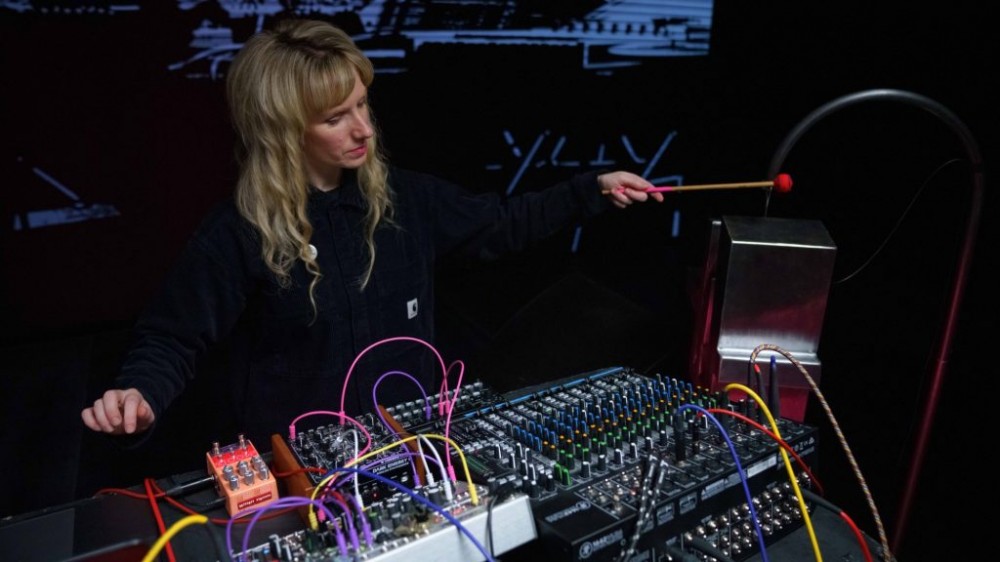
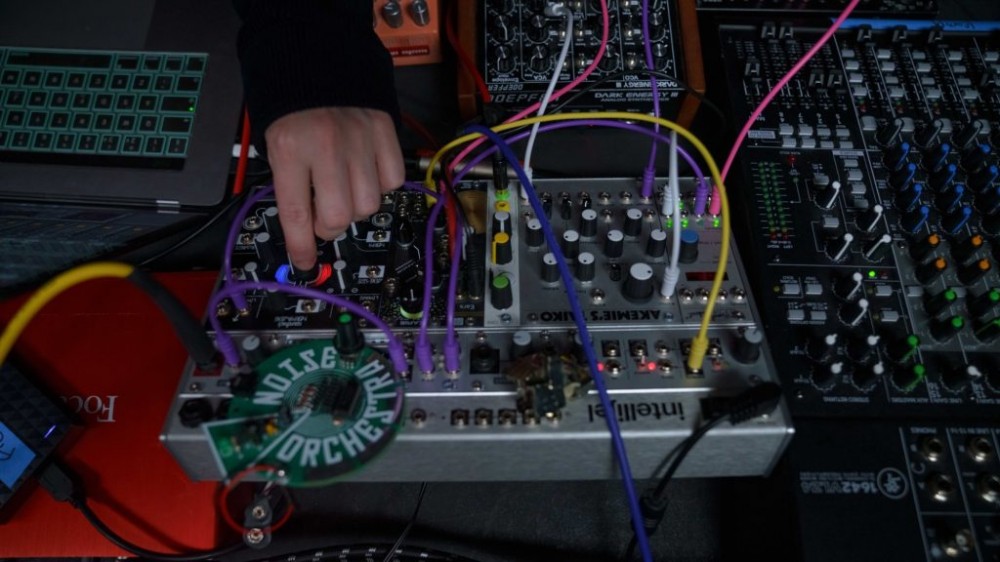
For this episode of Patch Notes, we invited Clarke to 180 Studios for a special performance of her AURA MACHINE project, accompanied by visuals from her collaborator Sean Clarke.
“This piece started off as a 10-minute online AV piece for PRiSM’s Future Music #3 at Royal Northern College of Music last summer,” she explains. “I’ve been working with Sean Clarke since then to develop the work as a live AV performance with the challenge of how to perform and improvise with machine learning materials – hence the new foray into modular. I started with the Make Noise Morphagene and it is slowly growing from there. I aim to develop this as a performance system for sound sculpture – AI and electronics.”
AURA MACHINE, which is part of Clarke’s artistic residency with NOVARS, University of Manchester, takes the listener on a journey through what happens to the sound object when processed by a neural network. The piece sees Clarke perform with live objects including her AURA Sculpture #1 STEEL – a resonant AI generated transmutational object (representing the sound object in latent space), and a glass bong.
“I became interested in the potential for neural synthesis to generate new raw sound materials and wanted to explore these systems working with my own recordings and sculptures,” Clarke says. “I was interested in what the models would detect and predict from sound data, where the autonomy of the artist is and just what these neural materials sounded like. Could neural synthesis be a new tool for musique concrète? And what does it mean for sampling and composition, as both sound source and collaborator.
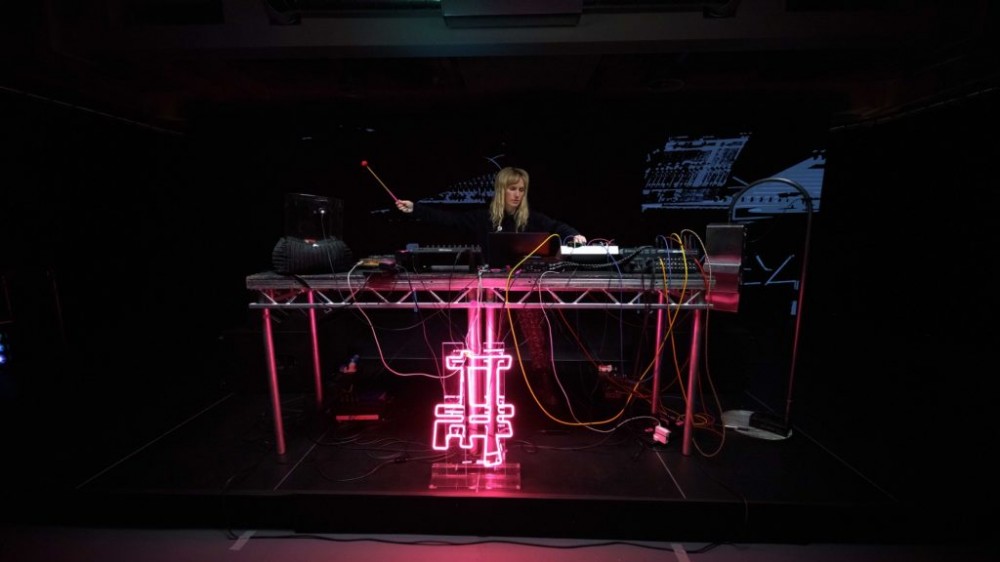
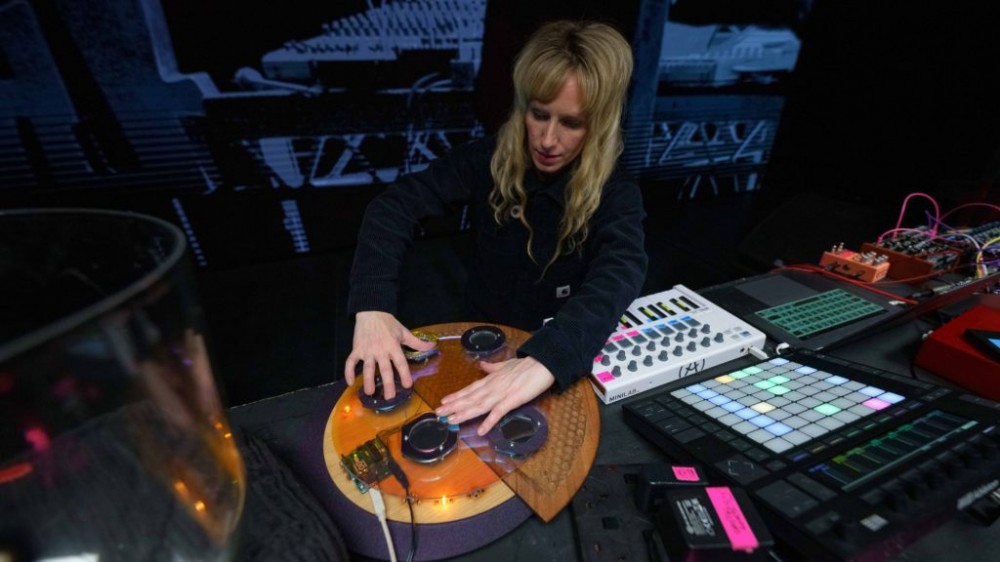
“I created a concrète music training dataset, a 90-minute collage of sound fragments and have been using the PRiSMSampleRNN model to train on this data working in collaboration with PRiSM at RNCM. I was listening for unique ‘blends’ and forms, this transmutation of matter from one state to another, some alchemy previously unheard.
“Working with neural synthesis you are working with a lot of output sampled material – I kept the output ML material quite raw as I wanted to show the true materiality of the sounds from the neural model. Some sounds are quite lofi, the experience of listening and producing with this material can be challenging as the output sounds were 16K, with lots of peaks, erratic events and insane architectures. I embraced the lo-fi aesthetic to show the true state of these new materials and to see if a machine could generate its own authentic aura or voice.”
The orginal visuals for AURA MACHINE came from photographs of Manchester mills, webcam feedback made using Hydra (a platform for live coding networked visuals) and the AURA MACHINE icons. “I wanted to create a symbolic graphical system, or a visual abstract language for the piece to explore dimensionality and the sound object in latent space,” she says. “I became fascinated by these forms which feature both in the visuals and as physical sound sculptures within the set.”
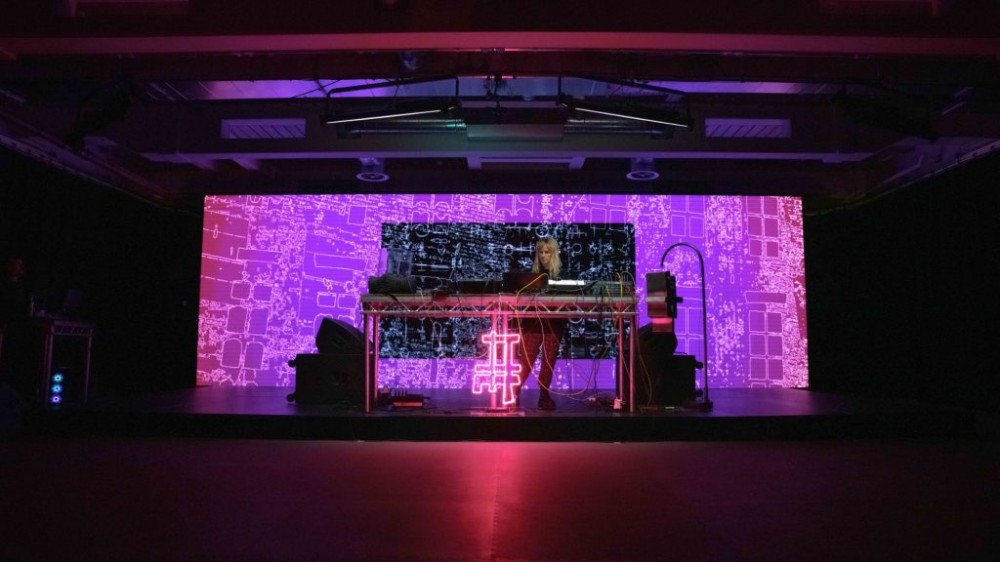

“I wanted to create a visual narrative which reflected Vicky’s process, creating an immersive experience which plotted the transformational journey of the sounds by the aIgorithm,” Sean Clarke says of the visuals. “Utilising the symbolic content created by the AI, I was able to create a range of interactive scenes which transported the viewer from the material to the virtual world.
“To achieve this, we explored the use of live camera feeds, generative/ audio-reactive visuals and the application of point clouds systems. Using a stencil of an AI shape, I was able to create a 3D model within Blender. Using Touchdesigner, It was then possible to convert the model into an animatable point cloud – showcased in the penultimate stages of the performance. The entire show was controlled live via Touchdesinger, allowing me to perform alongside Vicky in real time, and apply audio-reactive patches which drive the generative visuals.”
Vicky Clarke’s AURA MACHINE project continues throughout 2022 with a final sculpture currently being made. Clarke is also developing a music education project for young women around accessible sonic AI working with Brighter Sound. She plans to release the music from this research project towards the end of this year. “My debut EP Sleepstates will be self released this summer 2022 along with an accompanying net art piece,” Clarke says.
For more information on Vicky Clarke, visit her website and find her on Instagram. FInd out more about Sean Clarke’s audiovisual work at his website.
